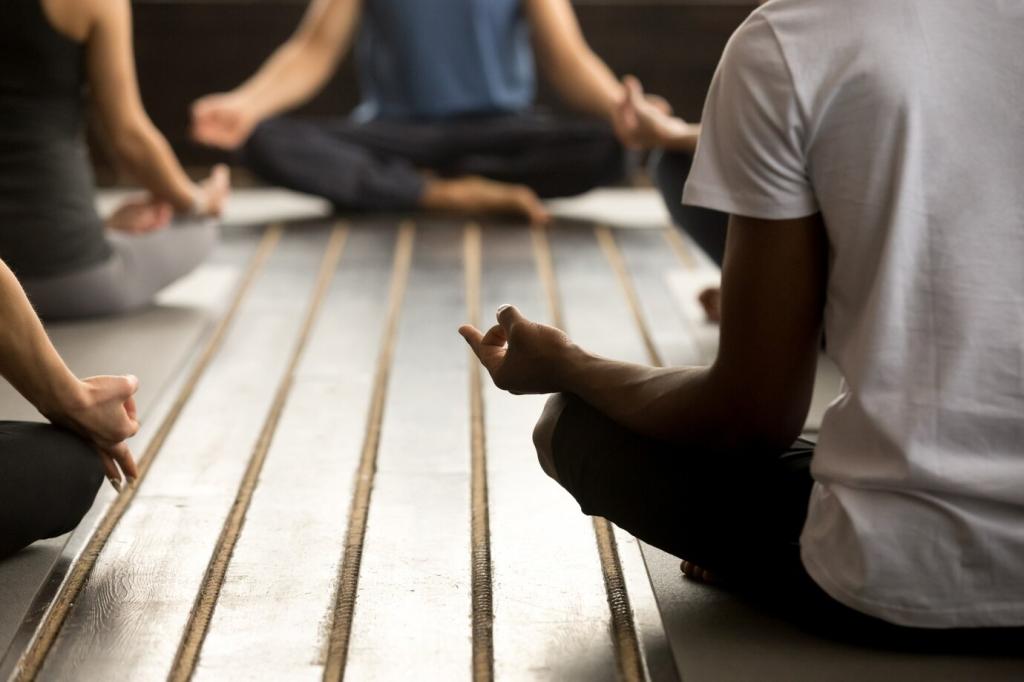Mindfulness Meditation for Physical Well‑being: Gentle Power for a Stronger Body
Chosen theme: Mindfulness Meditation for Physical Well-being. Slow down, breathe, and feel your body respond. Here, we explore how mindful attention translates into measurable strength, calmer systems, and daily habits that help you heal, move, and thrive. Subscribe to join a community committed to practical tools and compassionate motivation.
Pain Perception and Neuroplasticity
Research shows mindful awareness can reduce the brain’s reactivity to pain signals, shifting perception and easing tension. By noticing sensations without panic, you interrupt spirals of bracing, tightness, and guarded movement that prolong discomfort.
Inflammation, Breath, and the Rest Response
Slow, regulated breathing activates the parasympathetic system, which helps modulate inflammation and heart rate. Consistent practice can support blood pressure control and digestive ease by reducing chronic stress chemistry throughout your day.
A Story from the Track
A distance runner with recurring knee pain began three mindful minutes before runs: scanning the joint, breathing slower, and relaxing the jaw. Within weeks, pacing improved, pain softened, and recovery days felt refreshingly lighter.
Breath as Medicine: Techniques to Soothe and Strengthen
Place one hand on your belly, one on your ribs. Inhale through your nose to gently expand both. Exhale longer than you inhale. Repeat five minutes to relax muscles and reduce unnecessary bracing.
Mindful Movement: Walking, Stretching, and Everyday Posture
Mindful Walking Protocol
Walk at a comfortable pace. Notice footfall—heel, midfoot, toe. Soften shoulders, release the tongue, and match steps to slow breaths. Five mindful minutes can reset posture and ease lower back tightness.
Desk-Friendly Micro-Stretches
Every hour, pause for forty-five seconds: unclench your jaw, lengthen your neck, roll your shoulders, and breathe into your ribs. Tiny resets prevent accumulation of strain that turns into afternoon headaches.
The Posture Reset Cue
Choose a frequent cue—opening a door, checking your phone. Each cue, align ears over shoulders, soften knees, and exhale fully. Consistency builds structural ease and reduces end‑of‑day muscle fatigue noticeably.
Sleep, Recovery, and Repair with Mindful Routines
Lie on your back and sweep attention from toes to scalp, inviting each region to loosen. When thoughts intrude, label them kindly and return to sensation. This practice often shortens sleep latency.
Sleep, Recovery, and Repair with Mindful Routines
Ten slow nasal breaths while dimming lights signals your brain that effort is ending. Couple this with a consistent bedtime to reinforce circadian rhythm and reduce midnight awakenings over the coming weeks.


Mindful Eating for Energy, Immunity, and Gut Calm
01
Pause before eating and rate hunger from one to ten. Eat until satisfied, not stuffed. This mindful gauge stabilizes energy and reduces afternoon crashes that often trigger unnecessary snacking.
02
Put your utensil down between bites, noticing texture, aroma, and temperature. Chew more slowly than usual. This practice can ease bloating and supports your body’s natural satiety signals effectively.
03
Take three slow breaths before reaching for seconds. Ask if you need more or want more. Respecting this moment often prevents overeating and keeps your body comfortable for evening movement or sleep.
Humming, extended exhales, and gentle splash of cool water on your face can nudge the vagus nerve toward calm. Combine with soft gaze to reduce tension across your neck and shoulders quickly.

